Canon piano
Playing Canon piano variations must be one of the most satisfying things you can learn to do at the keyboard! The Canon’s simple repeating chords are the ideal platform for improvising chord accompaniments and melodies – as well as for learning about harmony and arranging.
The Canon chord sequence forms the basis of numerous other pieces of popular music, and you will be able to apply the keyboard skills and theory learned in this series of lessons to many other chord sequences going forward.
This page gives an outline of the Canon Project work-book, with links to relevant sample content pages.
|
The CANON PROJECT Pachelbel’s Canon in D is perhaps the most famous chord sequence of all time, and the basis of dozens of popular hits. If you can play and understand the Canon chord sequence, there isn’t much in popular music harmony you won’t be able to figure out! Its regular structure also makes it a great springboard for improvising and composition. |
|
Amazon Books also available Udemy
Click through to the Canon Project YouTube playlist here
Module One: Thirds in the Treble
You get straight into building your Canon piano arrangement with a beautiful but simple string of paired notes (thirds). Even these pairs on their own sound great over your Canon Project backing tracks. You are shown how to memorise the thirds, and start improvising simple variations right away.
Module Two: The Bass Line
The simple, eight-note Canon bass line is the foundation for much of your music-creating going forward, and of your understanding of chord sequences. You learn the bass line by shape and with sound fingering, learn to play the thirds from Module One with the right hand alone, and put the two together.
Module Three: Triads in the Treble
Popular modern keyboard styles in general require dependable, right hand three-note chords (triads). To avoid confusion and frustration, the Canon Project introduces the Canon chord sequence triads in a fail-safe two-hand fashion, with variations for duet-playing or backing track improvisation.
Supplement: Voice Movement Diagrams
It’s difficult keeping track of the all the notes in the string of eight right-hand Canon piano chords. Musicarta’s patent Voice Movement Diagrams will greatly shorten the amount of time it takes you to learn the right hand Canon chords, and is applicable to all your chord work.
The public-domain page is in preparation and will be announced in the RSS feed and newsletter and be indexed on the Chords page.
Module Four: Triads in the Right Hand
A quick look at fingering makes playing the Canon chords with the right hand alone much easier. As soon as you can do this, you can start playing around with them – over your left hand bass line, if you can manage it. Playing the chords an octave lower shows how ‘rocky’ the Canon chords can easily sound.
Module Five: Broken Chord Patterns
Broken chord patterns – playing the notes of right hand chords one after another instead of all together – is an important part of modern keyboard styling. Musicarta’s ‘bottom, middle, top’ (BMT) shorthand lets you get straight to the heart of this useful music-creating technique.
Click through
to Content Sample Page
One
to view examples of the teaching material.
Module Seven: Accompaniment Patterns
Left hand accompaniment patterns are also made out of chord tones. The basic Canon piano chord tone accompaniment pattern can be used over and over in music of all styles. Musicarta has ways of learning the Canon accompaniment which will ‘embed’ this accompaniment pattern skill in you for all time.
Module Eight: Accompaniment with RH Thirds
Playing the left hand accompaniment and the right hand thirds at the same time is a landmark achievement which requires careful preparation to avoid frustration and confusion. If you are able to, you bring in some of the variations from previous modules, too.
Module Nine: Accompaniment with RH Triads
Module Nine of the Canon Project builds on your Module Eight accomplishment with triad broken chord patterns in the right hand. This requires exercising some artistic judgement, and introduces you to real keyboard arranging skills.
Module Ten: Mixed Accompaniment Patterns
Playing some of the earlier right hand variations over the standard left hand accompaniment gives more chances to ‘tweak’ yourCanon piano arrangement to perfection. We take a look at other accompaniment patterns you can make from the left hand chord tones, and how they fit with the right hand material.
Module Eleven: Suspensions
Suspensions are an easy way to get more out of the chords you know – you’ll recognise the technique as soon as you listen to the module audio. You learn to apply suspension-resolution technique to the Canon chords, adjusting the accompaniment to fit. After that, it’s your to use anywhere.
Click through
to Content Sample Page
Two
to view examples of the teaching material.
|
The CANON PROJECT Pachelbel’s Canon in D is perhaps the most famous chord sequence of all time, and the basis of dozens of popular hits. If you can play and understand the Canon chord sequence, there isn’t much in popular music harmony you won’t be able to figure out! Its regular structure also makes it a great springboard for improvising and composition. |
|
Amazon Books also available Udemy
Click through to the Canon Project YouTube playlist here
Module Twelve: Slash Chords
You often see ‘slash chord’ symbols in sheet music – A/C#, for example. Module Twelve explains this second way of getting more out of the chords you know. The bass line ends up smoothed out, exactly as a bass guitarist would play it, and the ballad potential of the Canon chord sequence is revealed.
Module Thirteen: Melodic Variations
Now it’s the melody’s turn. You practice listening so you can copy a melody fragment. The structure of the Canon chord sequence (which you can easily see from the bass line) means that, using your acquired behind-the-scenes know-how, it’s easy to make a whole chorus of music from the fragment.
Module Fourteen: New Chords and Melodies
The Canon piano chords – plus minor variations on them – form the basis of dozens of pop songs. In this module, the left hand takes a turn playing the treble chords in inversion, and you take another step towards using your Canon Project hard work in any key with a thorough transposing treatment.
Click through
to Content Sample
Page Three
to view examples of the teaching material.
Module Fifteen: Ear Training and Harmonic Variation
The ability to tell just by listening what chords are being played in a piece or a song seems quite magical, but it can in fact be learned and practiced, and your familiarity with the Canon chord sequence, together with Musicarta’s ear-training material, offers the perfect opportunity to make speedy progress.
Module Sixteen: New Chords and Melodies
The Canon consists of one repeating chorus of eight chords – not enough material to make a popular song out of. This module explores extending the Canon into a 32-bar ‘AABA’ structure, plus two other ‘top secret’ ways of mining the Canon chords for some absolutely modern realisations.
The Canon Diaries
Knowing one chord sequence really well – especially the Canon in D – will continue to inspire your musical creativity. Musicarta’s own Canon-based piano compositions appear regularly in the Canon Diaries series of videos on Mister Musicarta YouTube.
These Diary entries show the kind of music you can expect to create if you work through the Musicarta Canon Project thoroughly. They are intended as teach-yourself projects, and full teaching notes – with supporting audio and MIDI files and the written-out music – are included in the new edition of the Canon Project.
Click
through to Content
Sample Page Four
to view examples of the teaching material.
Supplement: The ‘Answers’
All the modules in the Canon Project offer you some kind of creativity challenge, making the Canon Project a truly comprehensive keyboard creativity programme. You may have been asked to finish a version using a pattern presented in the module or play a variation on the module material, for example. In the ‘Answers’ section on-page (and in the Workbook) you'll you’ll find a video of the completed challenge with written-out music where appropriate – so you’re sure to ‘get it’!
Supplement: The Key of D
To enjoy playing the Canon piano material and make speedy progress, you need to practise getting to the D major piano keys. Playing scales is the traditional way of learning to do this. The Canon Project has a dedicated web page/Workbook section to help you study efficiently and creatively.
Supplement: Major and Minor Chords
The Canon piano arrangement uses the chords which naturally occur in the key of D – D, G and A majors, and B and F sharp minors. Your growing knowledge of these D major key chords presents an ideal opportunity to understand the difference between major and minor chords, and practice changing their ‘quality’. This also is a public domain Musicarta site page.
Supplement: Accompaniment Practice Patterns
The modern keyboard player needs to be able to build root, fifth, octave, tenth accompaniment patterns from chord symbols ‘on the fly’ and play them in the left hand almost automatically, while the right hand plays the music the listener mostly listens to. This module reveals the most efficient practice methods.
You can print off just a few pages of your Canon Project PDF if you find it convenient to have a hard copy for practising – in conjunction with the on-page audio and download MIDI files.
|
The CANON PROJECT Pachelbel’s Canon in D is perhaps the most famous chord sequence of all time, and the basis of dozens of popular hits. If you can play and understand the Canon chord sequence, there isn’t much in popular music harmony you won’t be able to figure out! Its regular structure also makes it a great springboard for improvising and composition. |
|
Amazon Books also available Udemy
Click through to the Canon Project YouTube playlist here
Now go on to browse the sample content pages. Additional Canon Project navigation appears in the right hand column of all Canon Project pages.
|
OUT NOW! |
THE MUSICARTA BEAT & RHYTHM WORKBOOK At last! An effective approach to keyboard rhythm & syncopation skills. Learn more! |
ONLY $24.95! |
THE MUSICARTA
|
The MusicartaA methodical approach to keyboard syncopation for
|
PUBLICATIONS
exciting keyboard
creativity courses
CHORDS 101
WORKBOOK

~HANON~
video course

Musicarta
Patreon
PENTATONICS
WORKBOOK
video course

Creative Keyboard
video course

BEAT AND RHYTHM
WORKBOOK
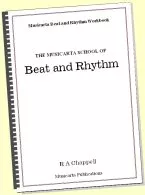
- Volume 1 -

12-BAR PIANO
STYLES WORKBOOK
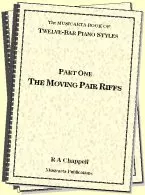
MUSICARTA MODES
WORKBOOK
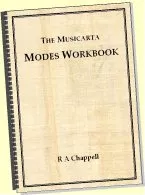
PIANO STYLE
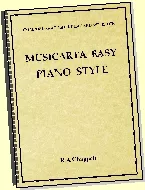
CANON PROJECT
video course
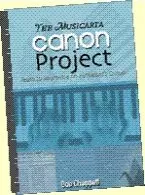
VARIATIONS
video course
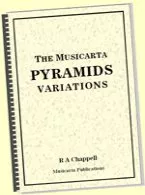
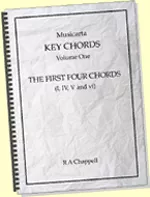
- Piano Solo -
video course
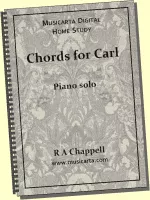
- Piano Solo -
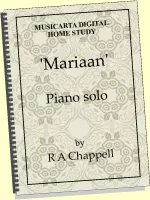

YouTube playlists





 THE LOGO
THE LOGO
